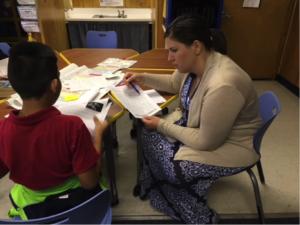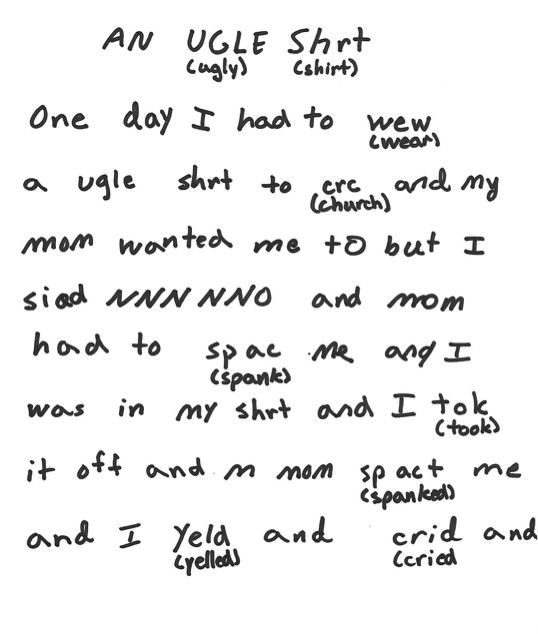It has been said that if nothing ever changed, there’d be no butterflies; also, progress is not possible without change. So if this is true, why is it so hard to get teachers to change? In a day and age of high stakes testing and ever increasing accountability, teachers can feel burdened just getting through the day. Therefore asking teachers to revamp the manner in which they teach, can often be the straw that broke the camel’s back.

Several years ago I found this note in my bag after a long hot day at a Summer Teacher’s Institute:
“My allergies were acting up. It was so hot in the classroom I was in. There was this old guy up front talking about standards and it was so dry that I thought I wouldn’t last the first 30 minutes! Then the lady with the name tags came in and I realized I was in the wrong class. I found my way to the right class to discover this bright animated woman and a room full of interested people. I was saved! The week flew by and I am a new teacher. I can’t wait for summer to be over and to start trying the things I learned. “
How do we emulate this type of learning and engage teachers to embrace change? I believe that educators, literacy coaches, principals, any other school leaders or professional learning consultants can use five techniques to help teachers embrace change.
One: The Power of Why
The first method I rely on in in order to motivate change is The Power of Why. When teachers spend precious time at an in-service or a meeting, they want to know how this time will benefit their teaching. They want to know that the methods being shared will make a difference in their instruction. In order to do this I give actual or anecdotal data that shows the results of using the techniques I am sharing. In a writer’s workshop presentation or Being a Writer day, I often share beginning and ending writing samples at the onset. Samples like the one below show teachers what can happen in a writer’s workshop or Being a Writer class:
A.J.’s writing sample from November:

He couldn’t read back a word of this when asked.
A.J.’s writing sample in April:

A.J. wrote ten more pages on this humorous narrative and could read every word.
If I am presenting a topic in reading or Making Meaning, I will share stories of actual students that read 40 to 50 novels in one year and grew five levels on the Benchmark Assessment System. This sharing takes no longer than five minutes, but saves time convincing teachers to attend to my message at later points in the day.
Two: Clear Directions
The next method I believe helps teachers embrace change is providing Clear Directions. Once teachers have decided what is being presented is something they want to try, we must give them the exact instructions in how to do so. Being a Writer, Being a Reader, and Making Meaning provide some of the clearest directions I have seen in 36 years of teaching. A few hours spent sharing how simple these programs are to follow motivates even the most reluctant teachers. If I am teaching a regular writer’s or reader’s workshop, I must spend many days making it clear and simple for teachers to follow the systems that make these workshops run effectively.
Three: Respect
Another aspect that encourages change is Respect. Teachers of the 21st Century are often questioned by parents, administrators, politicians, and the public in general. There was a day in our country when teachers were trusted to do their job. That era is long gone; therefore, if teachers see us as yet one more entity who disapproves of the job they are doing, we will lose our audience before we begin. This is why I begin every session I teach by stating how much I appreciate what any group of teachers is already doing. I begin by thanking them for the job they do and the hours they put in. I share with them that I believe this is the hardest job in the world AND the most important. I warn them that throughout the day I will be challenging their thinking and asking them to consider new ways of doing things. I then remind them that they are ALREADY doing a super job and I know this. I share with them how hard it was for me to change my methods during my career and how I hated every fall when the newest best program had just come along, and I was to throw the baby out with the bath water and begin again. This often leads to sharing a sample or anecdote as in step one from above to show them just what happened when I did embrace these new changes.
Four: Humor
Another technique I employ is Humor. I realize this doesn’t work for everyone, but I believe a little humor goes a long way. I love to share a joke or two up front and throughout the day. It is even better if this is a story about an actual student. Humans love to laugh. “Neuroscience research reveals that humor systematically activates the brain’s dopamine reward system, and cognitive studies show that dopamine is important for both goal-oriented motivation and long-term memory, while educational research indicates that correctly-used humor can be an effective intervention to improve retention in students from kindergarten through college.” (Sarah Henderson, Edutopia, 2015) I won’t waste your time here, but if you need some great teacher jokes, email me!
Five: Cooperative Structures and Movement Activities
Last and definitely not least are Cooperative Structures and Movement Activities. Often during the day, teachers need to Turn and Talk and reflect on what they are learning. I also like to use whip arounds, museum walks, walk and talk, inside-outside circle, philosophical chair debates, etc. Anything that gets teachers up, moving, and thinking helps them to learn and embrace what the presenter is sharing. Even if what we have to share is valuable, if teachers are bored during the presentation, we lose our audience. If we lose our audience, they will not try the ideas we are suggesting.
In other words, we must teach adults using the same best practices that we use in our classrooms on a daily basis. A world without progress or butterflies is not one I choose. Let’s work hard this year to motivate the teachers we work with to embrace change; let’s create many more butterflies.
